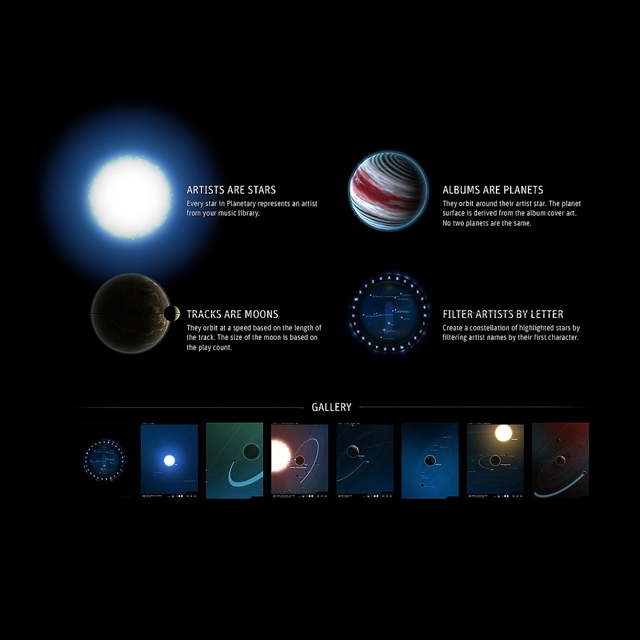We’ve written before about Cooper Hewitt’s first acquisition of an iOS app, Planetary: first Seb Chan and Aaron Cope described their unique and unusual way of “collecting” the app in 2014, and then we wrote about why Planetary was no longer functioning in 2019.

Planetary Software and Source Code (USA), 2011–12; Designed by Bloom Studio and Robert Hodgin (American); c++ and objective-c source files; File size (not incl. image files and other assets): 12,779 lines; Gift of Ben Cerveny, Tom Carden, Jesper Andersen, and Robert Hodgin, 2013-14-1
In 2020, however, software developer Kemal Enver remastered the work and it is currently alive and well (and free!) on the App Store as Planetary Remastered. It’s taken a while for us to understand the relationship between the “original” Planetary and the “remastered” one—and we are still wrestling with it. You can have a look yourself at the changes Kemal made, visible in the planetary-remastered branch on GitHub, an online platform for hosting and sharing code. More importantly, we’ve learned a lot about stewardship in the digital age, and it’s reshaping our collecting practices as we add more digital works to the collection.
Planetary was acquired as an experiment and a provocation. In 2014, museums didn’t collect much software, and the digital preservation field was still trying to figure out how to wrangle these works into museum collections. For apps—hardware-bound works, especially those that are platform-specific (such as iOS only)—there is no way to future-proof them. We cannot indefinitely maintain old hardware and software to play them, in what we call a “period-specific technical environment.” The iPhones in our collection live divorced from their software (see a great discussion from our friends at SF MoMA), and we essentially see hardware and software preservation as two separate, though interrelated, concerns.
Digital preservation strategies rely on thorough documentation, ideally including access to source code, and once acquired, the work and its archive begin to live parallel lives. In 2014, Cooper Hewitt and Planetary’s designers, Bloom Studios, hosted the app’s code on GitHub (with a BSD-3 license), hoping to ensure Planetary a future. Without maintaining a device with Planetary and a music library, the museum boldly acquired . . . just the code.
Preserving a “living” work like an app within a museum’s collection is very difficult because it requires maintaining a network of many parts that must continue to work together. Interactive works like these often lay dormant between exhibitions, until they are activated temporarily for display. This framing has encouraged conservators to think of the works as “performed” according to a score or script, more like an ephemeral work of music or theater than an everyday physical object that we expect to stay pretty much the same for each display. [1]
When the app was first released, it was downloaded over 3 million times before it was even acquired by the museum, and while the museum acquired the work, we by no means acquired it exclusively. It continued to exist, slowly becoming incompatible with more recent versions of iOS and hardware for those millions of users, until one of them decided to fix it.
The experimental, nonexclusive acquisition eventually allowed for Planetary’s reactivation outside the museum’s walls, without our knowledge or intervention. Remastering (the term Kemal used to describe his resurrection of the app) comes from the film world—a remastered version is definitely different from the original, sometimes better even, but inherently based on a copy of the original material. The Remastered Planetary has most of the same functions and a few of the same glitches as the original. But most importantly, it is available again as a live, performative, interactive experience.
Planetary (Remastered) customizes its visualizations to your music library. It’s a unique, participatory, beautiful, and still (or once again?) a living work. If you have an iPad or iPhone (sorry Android users), go download it so you can experience it now for yourself while it lives—because it won’t be forever!
As museums have reckoned with our audiences and priorities throughout the pandemic, approaches that allow greater access and involve communities in the shared stewardship of museums’ collections have drawn greater attention. Cooper Hewitt’s treatment of Planetary could be seen retroactively as an example of “post-custodial” stewardship—a term from our colleagues in archives that describes how institutions can enable something’s preservation and access without necessarily being its sole owner or custodian, a philosophy that challenges the way museums have historically treated ownership of collections.
Digital works—like Planetary, free digital fonts, emoji, and Cooper Hewitt’s recent acquisition of the coronavirus medical illustration—challenge us to rethink museums’ practices and our priorities. We’re working hard to envision new ways of providing greater access to our digital collection and we look forward to seeing how Planetary’s example can open our minds to more provocations and experiments.
Notes & Further Reading
[1] Rarely, gallery presentations have tackled the challenge of displaying interfaces—most notably in Bard Graduate Center’s The Interface Experience (which lives on here https://interface-experience.org/), but it requires lots of technical expertise and maintenance to keep things running, something most museums can’t afford to do in perpetuity. With the (hopefully temporary) closing of the Living Computer History Museum in Seattle, it is even more evident how costly and fragile the in-person interaction is to maintain (while they are closed, you can still visit their website where you can play with awesome emulators: https://www.livingcomputers.org/). For the framing of time-based-media as performative, see Pip Laurenson (2006) “Authenticity, Change and Loss in the Conservation of Time-Based Media Installations.” Tate Papers. https://www.tate.org.uk/research/publications/tate-papers/06/authenticity-change-and-loss-conservation-of-time-based-media-installations
Michael Connor. “A Manual for the 21st Century Gatekeeper” (2009) https://homemcr.org/media/a-manual-for-the-21st-century-gatekeeper/
Emmanuel Guez, Morgane Stricot, Lionel Broye & Stéphane Bizet (2017) The afterlives of network-based artworks, Journal of the Institute of Conservation, 40:2, 105–120, DOI: 10.1080/19455224.2017.1320299
Christian Kelleher. “Archives Without Archives: (Re)Locating and (Re)Defining the Archive Through Post-Custodial Praxis,” in “Critical Archival Studies,” eds. Michelle Caswell, Ricardo Punzalan, and T-Kay Sangwand. Special issue, Journal of Critical Library and Information Studies 1, no.2 (2017). DOI: 10.24242/jclis.v1i2.29.